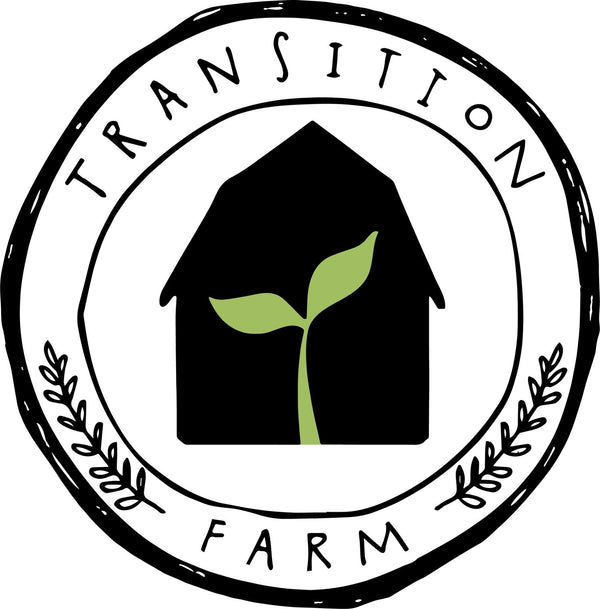Sowing the Seasons: Cool and Warm Season Crops at Transition Farm
Share

With the first warming days of spring, longer daylight hours, and fruit trees bursting into bloom, the urge to get gardening is irresistible! Dreams of ripe tomatoes, fragrant basil, and colourful dahlias start to stir.
Here at Transition Farm, situated in the cool temperate zone of southern Victoria and nestled in a frost hollow, we’re fortunate that the ground never truly freezes — which means we can harvest year-round. Still, knowing when to sow each crop is key to thriving plants and abundant harvests.
Over the years, we’ve learned that timing is everything. To help plan our growing calendar, we divide many of our favourite vegetables, herbs, and flowers into two broad groups: Cool Season Crops and Warm Season Crops. Each has its own rhythm and preferences for temperature, soil, and sunlight.
Cool Season Crops
Cool season crops are the first to shine as winter loosens its grip. These plants are frost tolerant, love cool nights, and grow best in cool soil temperatures. Their germination, growth, and flavour all depend on those refreshing conditions. In fact, many cool-weather vegetables taste sweeter and more tender when kissed by frost.
Common Cool Season Crops include:
Vegetables – Asparagus, Beetroot, Bok Choi, Broad Beans/Favas, Broccoli, Brussels Sprouts, Cabbage, Carrot, Cauliflower, Celeriac & Celery, Daikon, Endive, Escarole, Fennel, Garlic, Horseradish, Kale, Kohlrabi, Leek, some Lettuce varieties, Mustard, Onion, Pak Choi, Parsnips, Pea (snap, snow, shelling), Radish, Rhubarb, Rutabaga/Swedes, Salsify, Scallions, Shallot, Spinach, Swiss Chard, Turnip, Watercress
Herbs – Chamomile, Coriander, Nettle, Parsley, Thyme
Flowers – Bachelor’s Button, Calendula, California Poppy, Cerinthe, Cress, Feverfew, Forget-me-not, Foxglove, Larkspur, Nigella, Orlaya, Poppy, Queen Anne’s Lace, Scabiosa (Pincushion Flower), Snapdragons, Stock, Sweet Peas
Cool season crops are ideal to sow early in the year or as the weather cools again in late summer to early autumn — giving gardeners two windows of abundance each year.

 Warm Season Crops
Warm Season Crops
As the soil begins to warm and nights stay mild, warm season crops take the stage. These plants thrive when soil temperatures rise above 15°C (and prefer closer to 20°C) and need warmth to grow, flower, and fruit. They are not frost tolerant, so patience is essential — sowing too early can mean disappointment.
Once the nights stay consistently above 15°C, these crops surge with life, drawing on warmth and sunlight to produce vibrant fruit and lush growth.
Common Warm Season Crops include:
Vegetables – Beans, Cucumber, Eggplant, Melons (including cantaloupe, honeydew, muskmelon, and watermelon), Okra, Summer Squash (zucchini, crookneck, pattypan), Sweet Corn, Sweet Potato, Tomato, Winter Squash or Pumpkin (such as Butternut, Marina di Chioggia, Queensland Blue)
Herbs – Basil, Summer Savory, Dill
Flowers – Celosia, Cosmos, Dahlias, Marigolds, Sunflowers, Zinnias, Phlox
Warm season crops are the heart of summer and autumn.

Determining What To Sow When:
- UNDERSTAND YOUR GARDEN MICRO CLIMATE BY CHARTING YOUR FROST DATES (IF ANY) AND YOUR NIGHTTIME TEMPERATURES
- Use a maximum/minimum thermometer
- COOL SEASON CROPS WANT TO MATURE BEFORE THE HEAT OF SUMMER
- Work Backwards from a set early summer date using the days to maturity to determine your sowing date
- WARM SEASON CROPS WANT TO GROW ONCE THE SOIL AND TEMPERATURE HAVE SUFFICIENTLY WARMED
- Sow seeds inside and grow seedlings ready for transplanting
- Use recorded frost dates and/or temperature history and work backwards to determine when to start your seeds
- COOL SEASON VEGETABLES AGAIN SHINE IN AUTUMN
- Allow these to mature in your cooler Autumn months
- Work backwards to find your sowing dates (which can be in the hottest months of summer).
Although these distinctions are somewhat simplified, understanding them helps avoid the plant stresses that can last an entire season — or end a plant’s life early.
A few cold nights for a tomato, for example, can cause disfigured fruit or prevent the plant from setting fruit at all. Lettuce maturing in high heat can turn bitter, and bean seeds may rot before germination if sown into soil that’s still too cold.
At Transition Farm, we’re continually experimenting to push through these seasonal barriers — exploring spinach varieties that tolerate heat, or tomato lines that set fruit in cooler conditions. We share our findings in the variety descriptions on our seed lists.
We also practice “season extension” — using row covers, protected tunnels, cloches, and microclimates with heat stores to gently stretch the boundaries of what each crop can handle. These small adjustments can make a big difference, allowing for earlier harvests and longer growing windows.
There are so many options! But time and again, we’ve found that by supporting a crop with the conditions it naturally thrives in, we can reap a more abundant, flavoursome, and resilient harvest — with far less stress for both plant and gardener.
Finding Your Growing Rhythm
Understanding the difference between cool and warm season crops allows you to work with nature, not against it. By tuning into soil temperature, daylight, and seasonal rhythms, you can enjoy a continuous cycle of sowing, harvesting, and renewal — just as we do here at Transition Farm.
As spring unfolds, take a moment to observe the season’s cues. The earth is waking up, and with a little timing and care, your garden will soon be bursting with life — from the first crisp spinach leaves to the last sun-warmed tomatoes of summer.
Happy Sowing!




